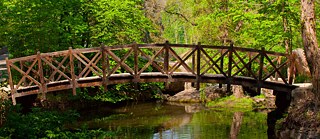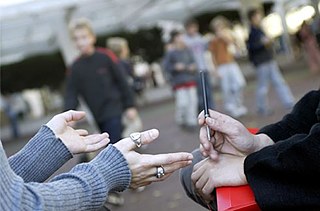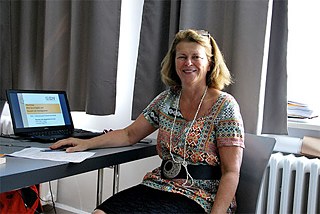Language and politics at the IDT
Not all German is German

The 16th International Conference of German Teachers (IDT) will be taking place in the summer of 2017. Ahead of the event, Marianne Hepp, president of the International Association of German Teachers, talks about multilingualism, different variants of German and the advantages of a controversial discussion.
Let me begin with a somewhat provocative question: if we compare the theme of the first International Conference of German Teachers in 1967 with that of this year’s IDT, the difference could hardly be greater: we see a shift from “Problems with GFL” to “Building Bridges – Connecting with German”, that is to say from an approach focusing on the problems (and their possible solutions) to an unequivocally affirmative stance. Has the world really become so perfect nowadays?
That is a question I have also asked myself. “Problems with GFL” is really a little strange. I talked to colleagues who had been former board members, and learnt that this in fact referred at the time to structural and grammatical issues, such as the rules governing the positioning within a sentence of the conjugated verb form. In other words, it was not a reference to problems of a primarily political nature; indeed it would not even have been easy to raise such issues back then, as the situation in the divided Germany did not permit this. The first conference was in Munich, the second in Leipzig. This was no coincidence, as Munich was home to the Goethe-Institut’s headquarters, while the Herder Institute was based in Leipzig. Thus the political aspect came into play on a different level. Over the course of the years, other countries were then also included in the rotation, with Salzburg, Bern and Budapest chosen to host the conference.
Bridge-building through choice of venue, in other words?
Precisely. And this bridge-building was selected as the theme for the IDT 2017, for nowadays we no longer wish to view German teaching from the negative perspective of its problems, but from the positive perspective of its ability to connect people. Naturally a bridge can also refer to a bridge between theory and practice – something that was always the case, incidentally. What is new in this context, however, is the idea of a bridge to multilingualism. We no longer see German as competing with other languages, but as one voice within a choir of languages. The language cultures of the world are becoming ever closer to one another. What is more, there are also many countries in which several languages are spoken. There is increasing awareness of this.
So far more emphasis is placed on cultural aspects?
Absolutely. Today, as we can see from the nine expert panels and 36 sections, we have a variety of themes that is being expanded at each IDT. Of particular interest are issues such as cultural education and regional studies, research into multilingualism, and digital learning. Multicultural aspects of learning, in other words, and media didactics: these are the sort of topics that attract a growing number of conference participants.
Is the decision to begin with the issues relating to language policy a conscious signal to politicians along the lines of: “We are here not only to exchange thoughts and ideas but also to set an agenda and make demands”?
That is something new at this IDT: the panels, which in some cases used to be separate, have now been combined and will take place at the beginning. After all, one of the goals of the conference is to present a language policy resolution that eleven specific working groups have been drawing up over the course of more than a year. This is an appeal to politicians and includes recommendations for promoting the German language worldwide and the concept of multilingualism and for supporting the professional activities of teachers of German.
In which ways could you lend force to these demands?
It is important to propose such language policy resolutions time and time again, and to be patient. And of course the impact is far greater if the decision-makers attend or attended the event in question themselves.
In addition to these overarching issues of a more general nature, there are also some changes on a practical level, namely insights into the work of teachers. Can you explain what the intention of this is?
You are referring to the didactic presentations – an entirely new format. German teachers from all over the world use short video sequences to present the work they do in their home countries, in their classes. This could be someone from India, for instance, where there are classes of 50 to 80 students and teachers have to come up with a didactic approach tailored to the specific needs of a large group. The videos show how different the situations can be in each country. The teachers hope that their presentations will give rise to a discussion of what is perceived to be good or not so good on the international level.

Definitely. This was also one of the good ideas that the organizers in Fribourg came up with. One after another, two lecturers talk about different aspects of the same topic, each presenting the issue from their own perspectives. For example, when a Swiss person and a Hungarian talk about something they have to deal with under completely different conditions in their home countries, this illustrates how different the approaches to one and the same issue can be. We hope that this will spark some fascinating discussions.
We have already talked a bit about the past and how the event venues rotate. Does this reflect a trend towards placing ever greater emphasis on the different variants of German? Is there a closer correlation nowadays between this rotation of venues and the regional variants of German?
This is something that is very close to the IDV’s heart. From the outset, the umbrella association has been committed to supporting school book policy in this direction. These days, the different variants of German feature in all school books. Back in 2007, the IDV already established a working group – one that is growing all the time – comprising representatives of the German-speaking countries of Germany, Austria, Switzerland and Liechtenstein. However, it is also important for the rotation system to include other countries in which German plays a role. Like Hungary, where an IDT already took place in 1983. That was no coincidence either, as there are pockets of German speakers in Hungary, too. It would be conceivable to continue choosing conference venues in places where German may not be the native language, but plays an important role nonetheless.
And would this also be reflected in the programme, as is the case this year in Fribourg/Freiburg? After all, the fact that the city marks a language boundary between German and French is particularly stressed.
Yes. This was already clearly evident at the IDT in Bolzano in Italy. Participants very much welcomed the decision to stage the IDT in a region in which German is one of several languages spoken; where the languages coexist. I clearly remember a woman from India saying to me: “It is just like in our country, only we have seven languages. That is quite normal for us, and it is good to see that this can also apply to the German language.”
Let us conclude by raising one topical issue: how much interest is there at the IDT in the situation with the refugees and the resulting high demand for German lessons?
We specifically asked our member associations about their interest in this topic. It turned out that there was considerable interest in the issue among German teachers, even in countries a long way from Europe, such as Brazil for instance. Participants want to know which solutions the German-speaking countries are coming up with. After all, other countries are also facing similar situations, with migrant labourers for example. Or indeed vice versa, with people from there moving to other countries and needing to learn a new language. The IDT programme reflects this interest. Incidentally, this is also a good example of how the IDT addresses current trends and interests and thus itself exerts influence on the future of teaching and on the subject of GFL.
